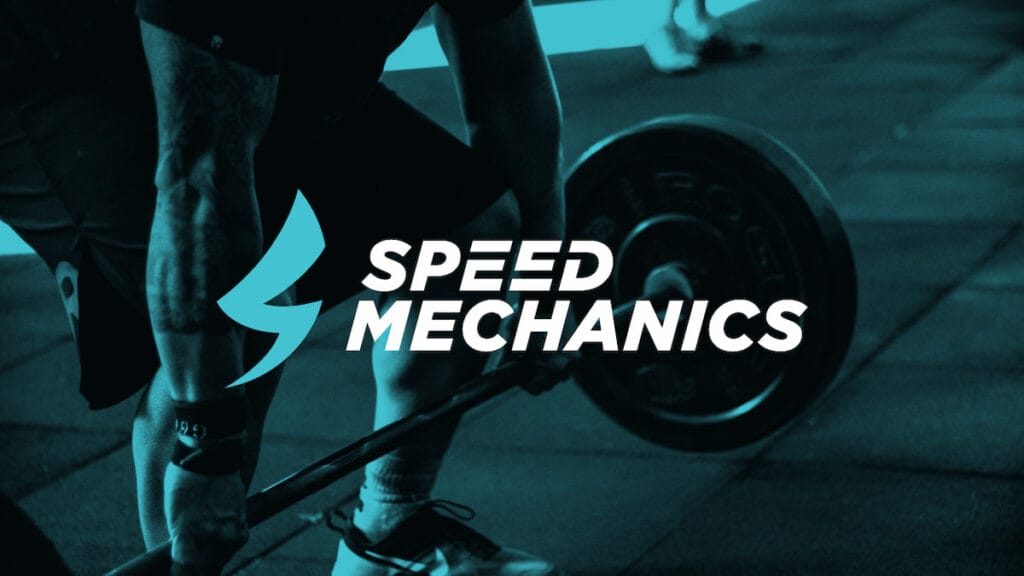This is going to sound like a strange article series but bear with me. This article is going to touch on sprinting and how it affects your back muscles, why your back muscles are important to sprinting, and the paradox of sprinting increasing strength in your back muscles while increasing general upper body strength can increase your speed.
First off, when I returned to sprinting and started incorporating it into my own training, there were a few areas that were always sore. The obvious one was my hamstrings, having had previous hamstring strains/tears, my lower legs/feet from the impacts, and my lats/mid back musculature. I could not believe how sore my lats and back were from sprinting only.

We know when sprinting, and the arms are used correctly, the lats are one of the drivers for the upper body. As the left arm swings forward and up, the lat on that side will be stretched and create a braking or blocking force, stopping the upper arm in front of the torso and the hand up and out from the face. The lats will then contract to rip the upper arm down and back, creating extension and internal rotation of the upper arm. The forearm will end up perpendicular to the torso or may extend open slightly due to momentum. This will continue to occur through the entire sprint effort.
At the world-class level, the 100m for males will take about 42-46 strides and each one of those will have a maximal contraction with each arm swing. That means 21-23 maximal contractions in the lats on each side (ES). That is a lot of rows or lat pulldowns. Even over 10m, that is roughly 5 strides +/- 1-2 strides. So that is 3 (ES) maximal upper body movements with each rep of 10m. Or more simply put, the arms will cycle about 5 times per second. This is the reason why my upper/middle back was so jacked up on my return to sprinting.
Carl Valle wrote an article last year on SimpliFaster titled, The Role of the Arms in Sprinting, and he stated that we are still not at the point of understanding the exact power or forces generated by the arm action in sprinting for a multitude of reasons, but that the research will eventually catch up. He also mentions a couple of crazy “rules of thumb” that certain S&C coaches throw out that sprinters should be able to lift specific absolute weights for pull-ups, rows, or other upper body movements to be fast. I agree with Carl, that these numbers are not hard and fast rules, they may even be ridiculous. However, there is research demonstrating that stronger athletes will be faster than their weaker counterparts.
I would argue that this is a relative strength gain, rather than chasing specific strength numbers as absolutes. The goal should be to increase one’s general strength while continuing to sprint. Speed is the goal and must remain at the forefront of training. At younger ages, simply increasing strength will increase speed, however, increasing speed will also make one stronger.
Anecdotally, I have seen myself and my athletes increase their bench press, pull-ups, and of course squats and deadlifts, simply by sprinting. This has both been in addition to their current training plan or by only sprinting. It does not have to be one or the other; it can be both and it should be both.
A comprehensive training program will incorporate varying ratios of sprinting, strength, agility/change of direction, plyometrics, throws, and energy system development. The percentages of each skill above as a whole will vary throughout the season, the year, and the athlete’s career based on their needs, sport, and position.
In conclusion, the arms are undoubtedly important for power and coordination of sprinting. Understanding the full range of motion of the arms and imparting this to your athletes is important. Understanding how to move your arms fluidly, how they help improve your sprint, and how they can hurt your sprint if done incorrectly is also very important. By increasing general strength, you will add to your body’s ability to generate force, which can – and should – translate to speed. More importantly, by sprinting you will increase your general strength.
Again, it is not either-or, it is both. During these pandemic times, though, if you do not have access to a weight room, sprinting is a great option to prepare yourself for the upcoming season. It requires no equipment, and you get to be outside. So, get outside and sprint. If you need a program, contact me at korser@speedmechanics.ca.
Also, for a brief visual, check out this video from a good friend and sprinter, Jackson Cheung, in Vancouver:

